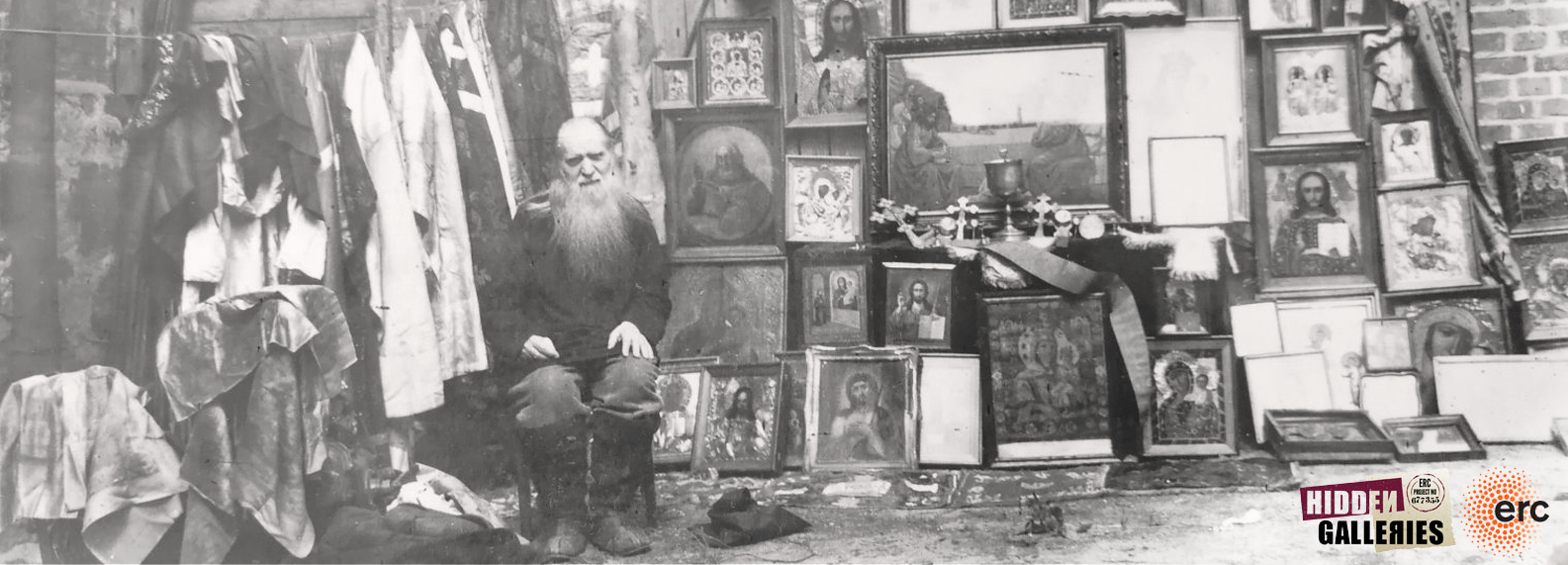Old Calendarists
Item set
Title
Old Calendarists
Description
Old Calendarists, also called Stilists in some sources (referring to “old style”), are members of the Orthodox Church, mainly from the eastern provinces of Moldavia and Bessarabia, who refused to accept the reform of the religious calendar introduced in by the Romanian Orthodox Church in 1924. The solar aspect of the Revised Julian Calendar was adopted by a number of Orthodox Churches at this time including Constantinople and Greece (similar Old Calendarist movements arose within the jurisdictions of these Churches too). The Old Calendarists also opposed perceived religious syncretism, ecumenism and Freemasonry within the Orthodox Church. The movement became very popular in rural communities and their leaders were mostly Orthodox priests and monks who continued to adhere to the pre-reform Calendar. The Old Calendarist Church and communities of believers were the target of severe persecution at the hands of the state during the interwar period, often encouraged by the official Orthodox Church.
Old Calendarist leaders and communities were continuously harassed and pursued by the secret police and the gendarmerie culminating in violent clashes, especially between 1934 and 1936, which led to the death and arrest of many Old Calendarist believers; these incidents were described by the authorities as "rebellions".
After a short period when the Old Calendarist Orthodox Church was recognized legally by the Romanian state in 1945 under the title The Traditionalist Christian Denomination (Cultul Creștin Tradiționalist) the new communist framework for religious life introduced in 1948 no longer recognized the Church. The persecution of the Old Calendarist Orthodox Church and its members continued during the communist period. Several Romanian Orthodox Church priests and monks joined the Old Calendarist Orthodox Church including bishop Galaction Cordun who consecrated bishops providing the church with its own hierarchy. The leadership of the Church, its clergy and lay members of the community were harassed, repeatedly imprisoned and placed under constant secret police surveillance. However, the Old Calendarist Church managed to maintain a continuous and functioning religious life. During the communist period the Church made multiple unsuccessful attempts to gain legal recognition.
Old Calendarist leaders and communities were continuously harassed and pursued by the secret police and the gendarmerie culminating in violent clashes, especially between 1934 and 1936, which led to the death and arrest of many Old Calendarist believers; these incidents were described by the authorities as "rebellions".
After a short period when the Old Calendarist Orthodox Church was recognized legally by the Romanian state in 1945 under the title The Traditionalist Christian Denomination (Cultul Creștin Tradiționalist) the new communist framework for religious life introduced in 1948 no longer recognized the Church. The persecution of the Old Calendarist Orthodox Church and its members continued during the communist period. Several Romanian Orthodox Church priests and monks joined the Old Calendarist Orthodox Church including bishop Galaction Cordun who consecrated bishops providing the church with its own hierarchy. The leadership of the Church, its clergy and lay members of the community were harassed, repeatedly imprisoned and placed under constant secret police surveillance. However, the Old Calendarist Church managed to maintain a continuous and functioning religious life. During the communist period the Church made multiple unsuccessful attempts to gain legal recognition.
Creator
Iuliana Cindrea
Publisher
This project has received funding from the European Research Council (ERC) under the European Union’s Horizon 2020 research and innovation programme No . 677355
Contributor
Anca Sincan
Bibliographic Citation
Iuliana Cindrea & Anca Sincan, "Old Calendarists"
Date Created
2018
Items
-
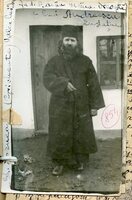
Confiscated photographs belonging to an Old Calendarist monk
These two photographs were confiscated in 1936 by the police from an Old Calendarist monk, Gheorghe Ștefan Dorneanu, also known as father Grichentie. The first photograph shows Dorneanu dressed in monastic clothes in front of what seems to be a small house or a skete. The left and upper edges of the photograph contain a handwritten text that states: „Gh. Dorneanu (Grichentie) Valea lui Ion jud. Bacău mâna dreaptă a lui Andreescu Eustațiu,” which can be translated as „Gh. Dorneanu (Grichentie) Valea lui Ion, Bacău County, the right hand of Andreescu Eustațiu.” The second photo depicts a group o -

Handwritten songbook belonging to nun Olimpiada Petreanu 1940
These images show a church songbook that was carefully handwritten by nun Olimpiada Petreanu sometime in 1940. The first image depicts the cover of the songbook. It conveys important information such as the owner of the songbook, the fact that it was a church songbook, “cântări bisericești”, and, in faded letters, the year when the songbook was written. The second and the third images show a small part of the content of the songbook, namely the so-called “canon of the soul”, which was dedicated to the Virgin Mary, and the Akatist of Jesus Christ. These are both important hymns and hymnal ele -
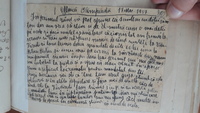
Postcard sent to nun Olimpiada Petreanu whilst in monastic incarceration
These images show the front and reverse of a postcard that was sent to nun Olimpiada Petreanu by her brother whilst she was incarcerated at Vărzărești Monastery. The postcard is of particular interest as it mentions the difficulties that the families of imprisoned Old Calendarist nuns encountered in their efforts to contact them. The first image shows the front of the postcard and contains references to one of the most important issues that the nuns and their families experienced. One of the constant complaints of the nuns, as well as of their families, was that the postcards, letters and pac -
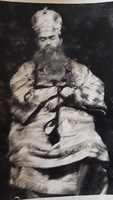
Photograph of and religious object belonging to a dead spiritual leader of the Old Calendarist Romanian Orthodox Church
The two photographs are related to the death of the Old Calendarist Romanian Orthodox Bishop Evloghie Oța and come as a result of extensive ethnographic fieldwork amongst Old Calendarist on-line communities and monasteries in Bucharest and Sibiu. The first picture represents Bishop Evloghie Oța before he was interred by his monastic brothers inside the underground church in Televiziunii street, 13 in February of 1979. From several descriptions given by informants of the Secret Police and in interviews with surviving witnesses, Bishop Evloghie Oța was interred sitting on the Bishop’s throne, dr -
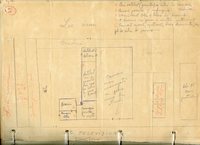
Plans of an underground Old Calendarist Orthodox house church Romania
The two images are part of an individual file opened by the secret police on Bishop Evloghie Oța of the Old Calendarist Orthodox Church following his release from prison in 1964 in the general Amnesty Decree. The images show house layouts that were drawn by the police during their surveillance operation. Two handwritten documents precede the two drawings of the house layouts. They are from two successive years and originate from the street/ local policemen (sectorist) that supervised the area where Bishop Evloghie Oța established his community and built his church in Televiziunii street. The -

Small Icon belonging to Romanian Old Calendarist believer
These images depicts a small icon that was confiscated by the secret police from an Old Calendarist believer. The first image shows the front of the icon, which portrays what seems to be the fight between good and evil, the holy trinity, angels, saints, numerous religious symbols, as well as two priests that are praying for the soul of a dying man. The second image shows the back of the small icon which has a short text. The first part of the text is indecipherable, but the second part states: “[...] Pray this prayer and feel that fear comes into your blood and body. Look at the dead man and h -
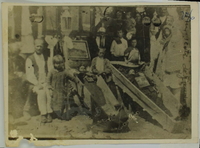
Photo of a funeral of two Old Calendarist believers Romania
This photograph was taken in 1934 or 1935 in the village of Toporăști in the county of Vaslui. It depicts the funeral of two victims of the Romanian Gendarmerie following an attack on their church in an attempt to arrest the community's priest. The first image shows a few Old Calendarist believers surrounding the coffins of two people, a man and a woman. They seem to have two icons placed on their chests and we can see that three of the children present in the photo have their hands on the coffins, implying that this is their parents' funeral. There is a short note on the right edge of the p -
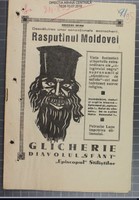
Brochure combating Old Calendarist ideas Romania
These four images are part of a brochure written in or around 1936 by Grigore Spiru, a well known Romanian journalist of the interwar period. The brochure, whose main characters are Glicherie Tănase and his alleged mistress, Maria Gârleanu, was meant to combat Old Calendarist ideas and to portray the Stilists (referring to "old style"), as Old Calendarists were referred to, in a negative manner. The first picture depicts the cover of the brochure, entitled “The Rasputin of Moldova. Glicherie, the holy devil and the Stilist bishop”, as well as a caricature of Glicherie. The comparison with th -

Postcard sent from detention by Romanian Old Calendarist nun
These images show a postcard sent by an Old Calendarist nun to her family whilst in detention. It is a particularly sensitive letter as it conveys the struggles of the nun who appears to have been rejected by her parents for reasons that are not clear from the information we have. The first image shows the face of the postcard and it contains references to the sufferings that the nun had endured for the last two years. From the message that she wrote to her parents, she seems to accuse them of having forgotten about her during these hardships and she reminds them that she is still their daugh -
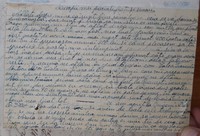
Confiscated postcard written by Romanian Old Calendarist nun
These images show a postcard sent by an Old Calendarist nun to her family in which she describes how she was arrested and sent to an Orthodox Monastery. The postcard was confiscated and attached to a file that contains many such postcards. They all date from approximately same period of time between 1936 and 1937. The first image represents the face of the postcard and includes important details about the fate of the nun. She describes to her family how she was arrested, where she was taken and what the conditions at the Monastery were like. Arrested by the Gendarmes on her way to the post of -
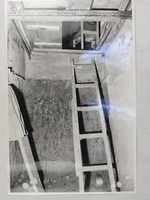
Images of Old Calendarist underground church in Bucharest
The 4 images are taken from a secret police personal file and were used as evidence of an Old Calendarist underground monastery in Bucharest. The community was led by the Old Calendarist bishop Evloghie Oța. According to the communist state legal framework, the Old Calendarist Orthodox Church was an illegal entity. These pictures documented a sweep operation of the secret police that ended in the destruction of the underground church and the arrest of the bishop. We cannot date the pictures precisely because the community kept rebuilding the underground chapel and the secret police destroyed -
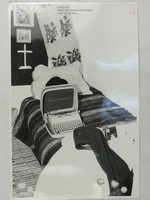
Incriminating photographs on Old Calendarist underground community Bucharest
The two photographs are part of an evidence file of an underground Old Calendarist community. They are successive images of a typewriter and the typewriter with its owner taken by the Securitate for an evidence file constructed against the underground group. The first photograph has the typewriter placed near a Kalimavkion (monastic head gear in the Orthodox Church) which visually links the object with the owner. They are placed in the dormitory on the bed and what appears to be some literature is visible next to the typewriter. The second picture presents the owner of the typewriter with the -
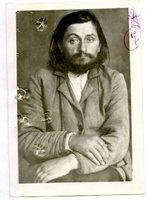
Mugshot of Old Calendarist monk Glicherie Tănase Romania
These mugshots were confiscated in 1952 by the Securitate from Onofrei V. Onofrei, an Old Calendarist monk, who was also the secretary of the Old Calendarist community. The mugshots of Glicherie Tănase, one of the most important Old Calendarist leaders, were taken in 1936, when he was arrested after the first confrontations between the Old Calendarists and the state authorities in Neamț county. He was arrested again, in 1952, and numerous attempts were made by members of the group to set him free. According to the penal file of Onofrei V. Onofrei, described as one of the youngest members of -

Confiscated postcard of Old Calendarists in Bălți County
This photograph, reproduced as a postcard, was confiscated by the police in 1936, from Pavel Caras, a former monk, who was wandering the villages in Bessarabia distributing these post cards to people. The photo was taken during the 1930s in Albineț, Bessarabia(today Republic of Moldova), which was one of the most important centres of Old Calendarist activity during the period. It depicts the Old Calendarists from Albineț standing in front of their church which appears to be under construction. The photo contains a small description in the lower right hand corner which states: ”In memory of t -
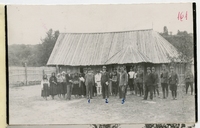
Destruction of Romanian Old Calendarist Church in Cucova
These photographs were taken in 1935, in the village of Cucova, in the county of Putna (nowadays Bacău), as evidence of the rebellions and problems caused by the Old Calendarists in the region. The term "Stilists" was also used by the state and the press in order to label them, referring to the fact that they were following the "old style" dates and calendar. The first image depicts some gendarmes, a few members of civil authorities and mainly women members of the Old Calendarist community, all of whom were arrested. The photograph was taken in front of the Old Calendarist wooden church, wh -
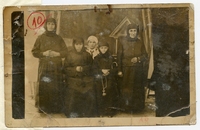
Confiscated photograph of Old Calendarist nuns Romania
This photograph was confiscated in 1941 by the Siguranța, the Romanian secret police prior to Communism. It depicts four Old Calendarist nuns, also referred to as Stilists. A short handwritten text on the reverse states that it was taken on September 1st, 1939. The nuns are dressed in standard monastic clothes, their heads are covered and their black tunics entirely cover their bodies. In their hands, they hold “metaniere”, Eastern Orthodox prayer ropes. The “metaniera” is an important part of monastic dress and is used during prayer to aid concentration. The composition of the photograph and
